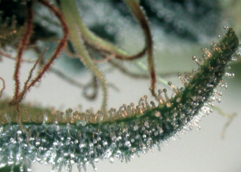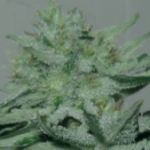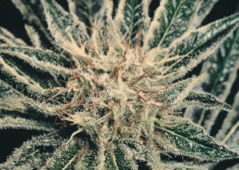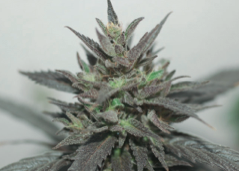Do you ever get confused by a strain name?
Do you know the origin of the strain you buy?
How do you know if it is the real deal?
 In the early years of Cannabis breeding (1960- 1980s) strains gained fame and recognition in the sub-culture of growing due to their selective breeding. That usually meant some travelers spent time in Asia or South America or Africa and collected their favorite land race seeds from plants they enjoyed. Those seeds were taken back to their home areas say America, Australia and Europe, planted and allowed to inbreed for many generations usually by allowing all the female plants to flourish and to select only one male plant. Therefore the following season each female that seeded again had those seeds planted and again allowed the females to be pollinated to a single male. This process was normal and followed the growing seasons, so one crop a year outdoors, until this hobby gardening/breed- ing began to use developments in the plant/agriculture world like the use of artificial lights to keep plants in a growing phase(18hr light to 6 hour dark) or a flowering phase(12 hours light to 12 hours dark).
In the early years of Cannabis breeding (1960- 1980s) strains gained fame and recognition in the sub-culture of growing due to their selective breeding. That usually meant some travelers spent time in Asia or South America or Africa and collected their favorite land race seeds from plants they enjoyed. Those seeds were taken back to their home areas say America, Australia and Europe, planted and allowed to inbreed for many generations usually by allowing all the female plants to flourish and to select only one male plant. Therefore the following season each female that seeded again had those seeds planted and again allowed the females to be pollinated to a single male. This process was normal and followed the growing seasons, so one crop a year outdoors, until this hobby gardening/breed- ing began to use developments in the plant/agriculture world like the use of artificial lights to keep plants in a growing phase(18hr light to 6 hour dark) or a flowering phase(12 hours light to 12 hours dark).
From the time cloning began in Cannabis there was a marked change in the concept of growing. Cloned plants allowed a continuous and consistent stable product time and time again…not to mention the competency of the average grower increased hyperbolically as technical information enlightened the growing world…a revolution was unfolding. Most early growers who had access to land races planted those seeds and selected the pollinated plants from their favorite female due to strength or flavor or effect or yield or quickness to flower etc…Over time the seed being cultivated began taking on the characteristics it was selected for and usually reflected the breeders’ personal choices in a plant. Since this work was not for everyone, it was easier to know a friend who did this work or had a reliable seed from which other growers simply grew out a female plant, cultivated it till the end of its life and use the dried flower till the next years harvest time. So even identical seed that originated in say Afghanistan and was dispersed to 10 different growers soon took on different traits as individuals selected for dif- ferent aspects of the same general plant. That is how originally one could never get the same Afghan expression as say another grower of Afghan, since each harvest of seed plants expressed slightly different traits to each particular grower/breeder.
 I recall one of my early Kush grows has a plant that went reddish purple very early into flowering, while one of my good friends plants from the same original batch of seed from the same area always remained dark green till the end of its cycle. When we compared flavors and yields etc…there were similarities like sisters in a family. So as we worked with our own personal favorite female plants we slowly diverged away from sister plants until say after 5 generations of selective breeding we had two very uniquely different Kush females with the same origins, but not looking anything alike. This is why a lot of Seed companies today can claim that the origins of the seed sold may be from Afghanistan, but explains why different seed companies have very different looking Afghani plants.
I recall one of my early Kush grows has a plant that went reddish purple very early into flowering, while one of my good friends plants from the same original batch of seed from the same area always remained dark green till the end of its cycle. When we compared flavors and yields etc…there were similarities like sisters in a family. So as we worked with our own personal favorite female plants we slowly diverged away from sister plants until say after 5 generations of selective breeding we had two very uniquely different Kush females with the same origins, but not looking anything alike. This is why a lot of Seed companies today can claim that the origins of the seed sold may be from Afghanistan, but explains why different seed companies have very different looking Afghani plants.
As clones began to play a bigger role in cannabis growing, so too did the hybridization of various land races, and breeding began to change into a multiplicity of colors and designs. Breeders who used Thai sativa plants fathers and began crossing them to Afghan female indica dominant plants and selectively reared the consecutive generations of seed by either inbreeding brother and sister plants of the same generation or via other methods of breeding, soon began to find special plants that combined both positive aspects of both parent lines. With continuous inbreeding of these hybrids new substrains or cultivars began to emerge. Soon combinations both simple and complex began producing very different plants to what had previously existed. What was actually occurring was humans were playing the role of the bumble bee, allowing plants of different continents to be crossed to plants of other continents. A bumble bee could not fly all the way to do this long distance pollination, so humans did it by collecting land races, taking them to their homes and allow both continents plants to grow and cross pollinate in a new environment or a new continent. This gave rise to the new sub strains of today and the multi-hybrids currently in popularity in different parts of the world.
 As these new plants were created a breeder would give the plant a common name like Haze or Skunk or Kush etc…soon that was not enough to distinguish between and growers/breeders began to create new common names like Widow Haze, or Orange Skunk or Lemon Kush, and slowly these plants got mixed to other hybrids and the complexities to trace the parental lines began. Considering most people do not go specifically to certain remote countries to collect Cannabis land races they relied on friend or friend of friends, and thus origins may not be as reliable as if you went there yourself. People who sell seed are not cheating or lying about the plants origins, unless they really do not know the parental origins and say they do. But considering the differences in personal selection the plants evolve to be quite different. Basic Mendellian genetics and sex linked genetics can compare indicas and sativas and respective dominances, but considering most people inherit seed from other people’s work over time it is an approximate science rather than a specific science .
As these new plants were created a breeder would give the plant a common name like Haze or Skunk or Kush etc…soon that was not enough to distinguish between and growers/breeders began to create new common names like Widow Haze, or Orange Skunk or Lemon Kush, and slowly these plants got mixed to other hybrids and the complexities to trace the parental lines began. Considering most people do not go specifically to certain remote countries to collect Cannabis land races they relied on friend or friend of friends, and thus origins may not be as reliable as if you went there yourself. People who sell seed are not cheating or lying about the plants origins, unless they really do not know the parental origins and say they do. But considering the differences in personal selection the plants evolve to be quite different. Basic Mendellian genetics and sex linked genetics can compare indicas and sativas and respective dominances, but considering most people inherit seed from other people’s work over time it is an approximate science rather than a specific science .
Of course since the beginning of commer- cial breeding of Cannabis Seed which began in the Netherlands by Nevil Schoenmakers with The Seedbank (in the mid 1980’s)…most varieties were inbreed lines specific to particular areas. For example Mullumbimby Madness was a strain made from old Thai/Colombian land races in the 70s in Australia, and depending upon which source you obtained the stock seed from affected the type of plant you acquired, but the growers were all within a 50km radius of one another.
The Seedbank produced such strains as Northern lights, Big Bud, Hawaiian Haze, NL5 Haze, Super Skunk, Ultra Skunk and many others. These we bought by growers world wide and again taken back to the areas they lived and over time crossed with other selected plants, giving rise to the multi-hybrids most all seed companies and growers use to this day.
 The most common or frequently asked questions I get on my helpdesks are from growers who after their first few grows start educating themselves on what things should look like based on fellow growers reports. Usually they are motivated due to the fact that their grows did not look anything like what the respective Seed company photo portrait the plant to be, consulted a few forums online and chatted to others who grew similar or the same strains. With a little research they usually find out they bought a strain with a name they wanted and a lot even had a description they wanted but still the plant they grew was not looking or did not give them the same aromas or effect described. A lot of these growers based their decision to purchase mainly on economics and therefore went with a company who could supply all of these aspects, rather than spend a few moments with other growers to hear their experiences with the same strain from the same company selling it. Taking in to consideration that the cannabis seed industry is not a regulated body without a regulated set of guidelines to work by, nor do a lot offer any back up service or online helpdesk it is not so surprising that so many strains have the same names but are nothing alike! If it was possible to speak to the breeder directly, post photos of the strains in question, and compare your own photos to other independent growers of the same seed type it may make the Seed industry a little more honest. The internet will be the best way in the future for world wide growers to stay connected and with time will expose the frauds and the untruths.
The most common or frequently asked questions I get on my helpdesks are from growers who after their first few grows start educating themselves on what things should look like based on fellow growers reports. Usually they are motivated due to the fact that their grows did not look anything like what the respective Seed company photo portrait the plant to be, consulted a few forums online and chatted to others who grew similar or the same strains. With a little research they usually find out they bought a strain with a name they wanted and a lot even had a description they wanted but still the plant they grew was not looking or did not give them the same aromas or effect described. A lot of these growers based their decision to purchase mainly on economics and therefore went with a company who could supply all of these aspects, rather than spend a few moments with other growers to hear their experiences with the same strain from the same company selling it. Taking in to consideration that the cannabis seed industry is not a regulated body without a regulated set of guidelines to work by, nor do a lot offer any back up service or online helpdesk it is not so surprising that so many strains have the same names but are nothing alike! If it was possible to speak to the breeder directly, post photos of the strains in question, and compare your own photos to other independent growers of the same seed type it may make the Seed industry a little more honest. The internet will be the best way in the future for world wide growers to stay connected and with time will expose the frauds and the untruths.
The biggest problem that growers should be aware of today is that if a plant makes notoriety in an area and is called Nevil’s Haze for example, then another Seed company may decide to call a similar plant or their version of the plant by the same name. It acts only to confuse a grower and to try and increase sales based on a common name for the Seed companies. Nowadays certain Seed companies are even producing non-bred seeds, labeling them with a popular common name taken from other growers in other countries and claiming it is their creation, this is the state of the market and there are a lot of first time growers who believe anything if the price is right!
 It makes sense to do a little bit of reading like you would for buying a TV or a new stereo. Make sure you can contact the company you wish to buy from directly, ask if they have specific policies on ungerminating seed, or seed damaged in transit. See if you can talk to the actual breeders or responsible parties not just workers of a company who have set parameters to work within. Talk to other growers and try to ask as many questions before you purchase to be secure with your seeds, as it is easy to call a seed anything since it will be a minimum of 4-6 months before you can tell if the company was pulling the wool over your eyes or not, as it takes that long to grow it from seed and most seed companies know this and take advantage of this. Do not forget that ‘the customer is always right’ and if you do not feel this with a company before you purchase the chances are you will not once you begin with their products!!!!!
It makes sense to do a little bit of reading like you would for buying a TV or a new stereo. Make sure you can contact the company you wish to buy from directly, ask if they have specific policies on ungerminating seed, or seed damaged in transit. See if you can talk to the actual breeders or responsible parties not just workers of a company who have set parameters to work within. Talk to other growers and try to ask as many questions before you purchase to be secure with your seeds, as it is easy to call a seed anything since it will be a minimum of 4-6 months before you can tell if the company was pulling the wool over your eyes or not, as it takes that long to grow it from seed and most seed companies know this and take advantage of this. Do not forget that ‘the customer is always right’ and if you do not feel this with a company before you purchase the chances are you will not once you begin with their products!!!!!
Published on Dolce Vita International 3




